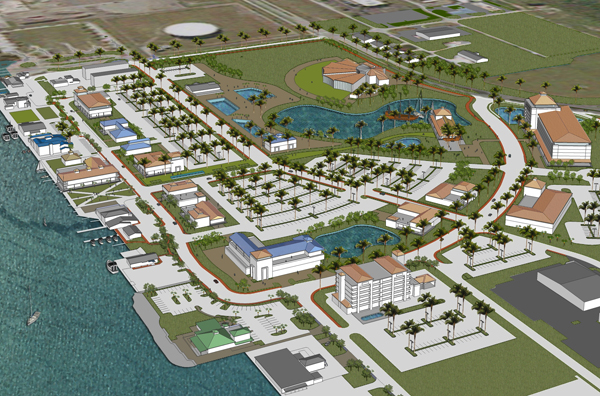MASTER PLANNING
Through our master planning services The Bernard Johnson Group Inc. helps clients create and implement their master plan vision. The basic goal of the land use master plan is to provide a general pattern for the location, distribution and character of future land use within a potential growth or redevelopment area. As a guideline the land use master plan is not a zoning document but rather a reflection of the community’s vision of its future self. The land use master plan is composed of land use plan narratives, plan maps and land use category classifications and descriptions.

Dependant on specific client needs, the master land use plan may include:
- Land development & redevelopment policies & maps
- Transect based framework plans
- Transportation network enhancements & multi-modal concept plans
- Retrofit plans for key suburban corridors
- Conceptual planning in 3 dimensions for key locations in various contexts
- Center city urban and neighborhood design/urban infill plan
- Financing strategies, public-private partnerships programs, and key parcel development pro-forma analysis
- Strategic initiatives for environmental sustainability & Historic preservation
- Strategies for the provision and creation of affordable housing
Typically the land use master plan works together with the comprehensive development plan, land element plans, and other plans & programs to provide for long range balanced growth. The land use master plan is a three-dimensional framework for the comprehensive plan and should serve as the basis for the facility and service needs of the area under analysis.
Plan Development Process
The master planning process is shaped by the physical, environmental, economic, and social conditions of the community and should reflect a balance between vision, prescription, and flexibility. Through the master planning process, we partner with our clients to help them define these three key elements in order to sustain a communities future needs and growth.
In order to achieve this vision, The Bernard Johnson Group’s professional urban planning team provides planning and design services to assist in the master plan preparation. If necessary a community charrette-based design process may be used to guide the overall creation of the master plan; this process involves significant community input obtained within a compressed time frame. The guiding principles of a charrette-based process are:
- Involve all stake holders from the start of planning to foster a shared vision
- Manage the process effectively to build trust between the planning team and the public
- Work across all planning disciplines to minimize conflict and maximize productivity
- Work in short feedback loops to test ideas and stimulate public participation
- Work in detail to test the feasibility of planning, design and implementation strategies.
Master Plan Implementation
Master plans are usually accompanied by implementation plans such as form-based zoning code changes as well as conventional zoning change recommendations. Form-based codes provide the prescription and flexibility needed to accomplish the community’s long-range vision. These codes are heavily design based and provide emphasis on urban design and architectural form. Conventional zoning codes focus on land uses, which tend to change over time. Form-based codes focus less on building and land use and more on the massing, character and scale of the buildings themselves, as well as the design and use of adjacent urban spaces. Accordingly, form-based zoning codes are illustrated to depict urban form and spatial relationships desired by the community in varying contexts. The Master Land Use Plan in combination with zoning, districting and redistricting recommendations and necessary modifications, and additional infrastructure related recommendations, form the basis for the implementation plan.
